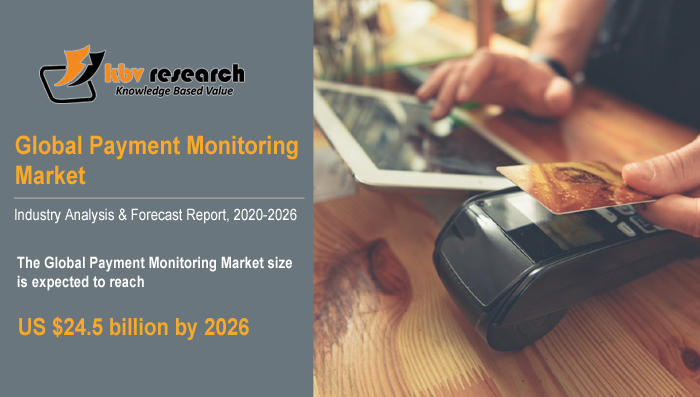Payment Monitoring Solutions For Emerging Industries
Over the years, hackers have developed sophisticated tactics aimed at finding and exploiting vulnerabilities. Currently, the increasing losses arising from fraud account for 5 percent of the total revenue of the company. With the growing amount of data generated from various transactions, businesses are now taking proactive steps to minimize losses from cyber threats and fraud. As such, identification and prevention of fraud have become one of the top priorities across a range of industries.
In recent years, rising money laundering has become a problem for financial institutions and other industries. In order to commit fraud and commit ransomware attacks, Cybercriminals are studying scale organizations to explore potential vulnerabilities by demanded virtual currencies such as Bitcoin, Ether, and Ripple. Since these virtual currencies are not distributed or regulated by a central authority, the money laundering activities are the focus of this.
 |
| Payment Monitoring Solutions |
In recent years, rising money laundering has become a problem for financial institutions and other industries. In order to commit fraud and commit ransomware attacks, Cybercriminals are studying scale organizations to explore potential vulnerabilities by demanded virtual currencies such as Bitcoin, Ether, and Ripple. Since these virtual currencies are not distributed or regulated by a central authority, the money laundering activities are the focus of this.
What is a payment monitoring system?
Payment monitoring is the process of tracking, handling, and evaluating transactions performed on a business application. The key role of payment monitoring is to track customer transactions, which include analyzing both current and historical customer information in order to provide a comprehensive view of customer behavior. It is primarily used to assess the overall efficiency of the transaction processing system and is used by organizations to handle various types of customer transactions effectively and efficiently.While the payment industry continues to evolve, organizations are facing new competitors, emerging technologies, technological barriers, and rising consumer expectations, as well as an ever-growing possibility of fraud. Payments monitoring solutions give comprehensive, real-time access to the entire payment climate. It gives unparalleled insights into payment transactions and trends in real-time. With in-depth analysis and troubleshooting capabilities, you can proactively optimize the entire payment environment, improve customer experience, innovate quickly, minimize risk, and increase profitability.
Why is it important to monitor payment?
Anti-Money Laundering
Anti-money laundering (AML) payment tracking software helps banks and other financial entities to track consumer purchases on a daily basis or in real-time for threats. Through integrating this information with an overview of the customer's background details and account profile, the software will provide financial firms with a "whole picture" view of the customer's profile, risk levels, and expected future behaviors, and can also produce warnings and alerts of suspicious activity.The transactions monitored can involve cash deposits and withdrawals, money transfers, and ACH activities. Broadly speaking, a risk-based approach requires financial firms to take intensive measures (such as improved due diligence) to manage risk for clients or scenarios deemed to be of higher risk, whereas for low-risk clients or scenarios, and where there is no evidence of money trafficking or terrorism activity, simplified measures can be permitted.
Fraud Detection & Prevention
Centralized fraud detection and integrated case management systems record every online bill payment and stop the processing of suspicious transactions until they have been reviewed by fraud specialists. Advanced payment monitoring solutions leverage advanced algorithms and proprietary negative file history, making it extremely accurate to detect fraudulent transactions before they are processed.These payment monitoring solutions enable companies to proactively identify potential fraudulent threats, mitigate risks, and ensure compliance with regulations. Solutions analyze high-volume data streams, detect complex suspicious scenarios and examine behavior patterns, and provide the real-time intelligence needed to identify fraudulent transactions.
Industries that are contributing to the proliferation of technology:
Healthcare
When it comes to the patient collection, trends in healthcare payments tell us that providers are struggling. Although patients owe more to services, providers still rely on the same collection methods from decades ago – print and mail statements. Customers' demand for these outdated tools is growing less and less, as it demonstrates how effectively services are receiving payments from their customers. Providers have the potential to leverage industry developments to empower patients with new payment technologies and services for better payment experience.Retail and Ecommerce
The evolving demands of traders, regulatory compliance requirements and declining interchange fee revenues are leading payment processors and acquirers to implement new payment monitoring initiatives aimed at successfully processing higher volumes of transactions and securing the payment infrastructure in a more cost-effective, operationally efficient manner. Real-time transaction tracking, data processing, and automation tools allow payment processors and service providers to and blind spots and efficiently handle front-end interaction devices, integrated payment technologies, and back-end banking links.Banking, financial services and insurance (BFSI)
Payment monitoring concept in the financial/Fintech and banking sectors refers to the numerous electronic processes deployed as part of the company/institution's infrastructure and to the main aspect of their AML (Anti Money Laundering)/CFT (Counter-Terrorism Financing) methodology. These programs are crucial to the continuing control of the company's operations, i.e. throughout its lifetime as a client, both during the initial KYC (Know Your Customer) and on-boarding process.The systems are installed at the top of the market and market data systems of companies, evaluated, and created "alerts" for research by compliance departments based on the customer's activity. "Alerts" are based on different customizable rules chosen by the company on the basis of its business and client profiles. Such guidelines are at the core of transaction management programs and have been developed on the basis of common practices for money laundering that have been defined worldwide.
Free Valuable Insights: Global Payment Monitoring Market to reach a market size of USD 24.5 billion by 2026



Comments
Post a Comment